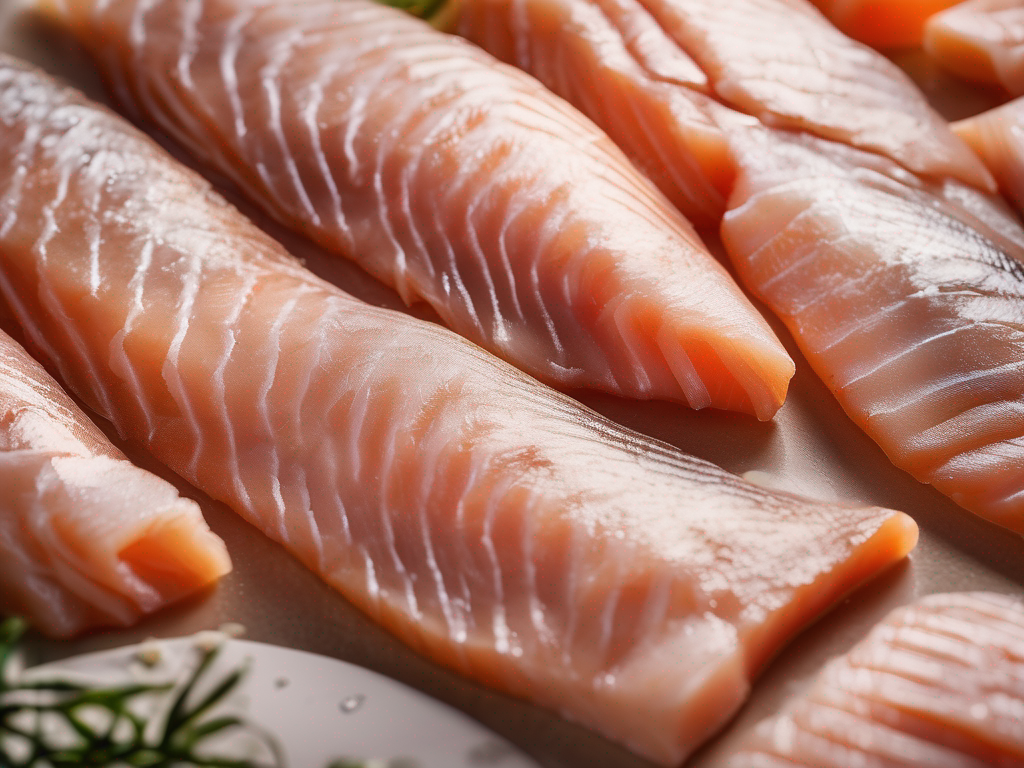
The Best Way to Freeze Leftover Portions of Frozen Fish Fillet
Get Your Free Food Safety Cheat Sheet
30 most common foods with instant answers. Print it and stick it on your fridge—completely free!
The Best Way to Freeze Leftover Portions of Frozen Fish Fillet
When it comes to preserving leftover portions of frozen fish fillet for later use, proper storage and freezing techniques are key. Freezing fish fillets correctly can help maintain their quality, flavor, and nutritional value. In this guide, we will discuss the best practices for freezing leftover portions of frozen fish fillet to ensure they stay fresh and safe for consumption. (Frozen fish fillet)
Understanding the Importance of Proper Freezing Techniques for Fish Fillet
Freezing leftover portions of fish fillet is a convenient way to extend their shelf life and reduce food waste. However, improper freezing techniques can lead to freezer burn, loss of flavor, and potential food safety risks. By following the right steps, you can preserve the quality of your frozen fish fillets and enjoy delicious meals whenever you choose.
Steps to Freeze Leftover Portions of Frozen Fish Fillet
-
Prepare the Fish Fillet: Before freezing the leftover portions of fish fillet, make sure they are fresh and properly cleaned. Pat them dry with a paper towel to remove excess moisture, which can cause ice crystals to form during freezing.
-
Divide into Portions: Divide the fish fillet into individual portions based on your serving needs. This will make it easier to thaw only the amount you plan to use, reducing the risk of refreezing.
-
Wrap Properly: To prevent freezer burn and maintain freshness, wrap each portion of fish fillet tightly in plastic wrap or aluminum foil. Alternatively, you can use airtight containers or freezer bags for storage.
-
Label and Date: To keep track of the freezing date and ensure proper rotation, label each wrapped portion with the type of fish and the date it was frozen.
-
Freeze Quickly: Place the wrapped fish fillet portions in the freezer as soon as possible to minimize the time they spend at room temperature. Rapid freezing helps preserve the texture and flavor of the fish.
Tips for Safe Storage and Thawing
- Safe Storage: Store the frozen fish fillet portions in the coldest part of the freezer, away from other strong-smelling foods to prevent flavor transfer.
- Thawing: Thaw fish fillets in the refrigerator overnight or use the defrost setting on your microwave for a quick thaw. Avoid thawing fish fillets at room temperature to prevent bacterial growth.
Safety Precautions for Freezing Fish Fillet
Ensuring the safety of frozen fish fillet is essential to prevent foodborne illnesses and maintain quality. Here are some safety precautions to keep in mind when freezing leftover portions of fish fillet:
Avoid Refreezing
- Refreezing fish fillets that have already been thawed is not recommended, as it can affect the texture and quality of the fish.
Proper Handling
- Wash your hands and all utensils, cutting boards, and surfaces that come into contact with the fish fillet to prevent cross-contamination.
Temperature Control
- Maintain the freezer temperature at 0°F (-18°C) or below to ensure the fish fillet stays frozen and safe for consumption.
Conclusion
By following proper freezing techniques and safety precautions, you can effectively store leftover portions of frozen fish fillet for later use. Remember to label, date, and store the fish fillet properly to maintain its quality and flavor. With these tips in mind, you can enjoy delicious fish fillet meals whenever the craving strikes. [frozen fish fillet](/food/frozen fish fillet) (Frozen fish fillet)
Authoritative Food Safety References
These agencies and university labs inform every tip and health precaution we publish.
USDA FoodKeeper – Cold Storage Guidelines
Official refrigerator, freezer, and pantry timelines maintained by the U.S. Department of Agriculture.
Visit USDA FoodKeeperFDA Produce Safety Rule & Grower Guidance
Field-to-fridge handling practices that prevent contamination of fruits, vegetables, and leafy greens.
Visit FDA Produce SafetyCDC Foodborne Illness Prevention Hub
Surveillance-backed guidance on pathogens, symptoms, and steps to reduce foodborne illness risk.
Visit CDC Food SafetyUC Davis Postharvest Technology Center
University research detailing optimal storage atmospheres for produce after harvest.
Visit UC Davis PostharvestPenn State Extension – Home Food Preservation & Safety
Peer-reviewed extension bulletins on safe canning, chilling, and reheating practices.
Visit Penn State ExtensionGet Your Free Food Safety Cheat Sheet
30 most common foods with instant answers. Print it and stick it on your fridge—completely free! Want more? Upgrade to the complete guide with 70+ foods.
Scan your food directly and get instant safety info using our AI-powered camera feature.